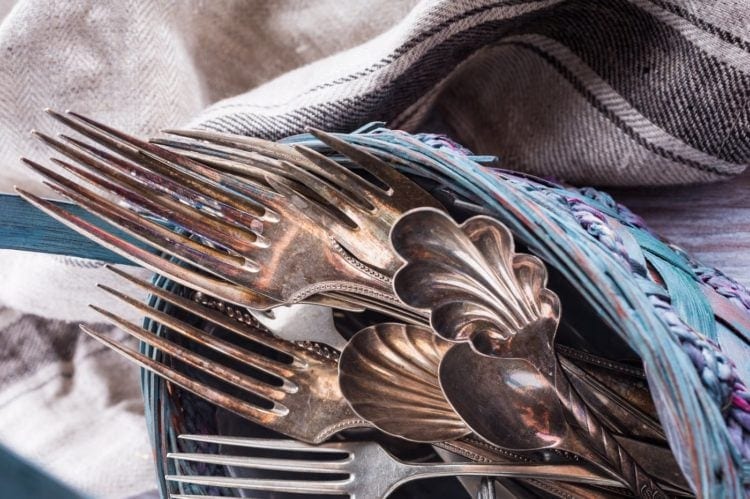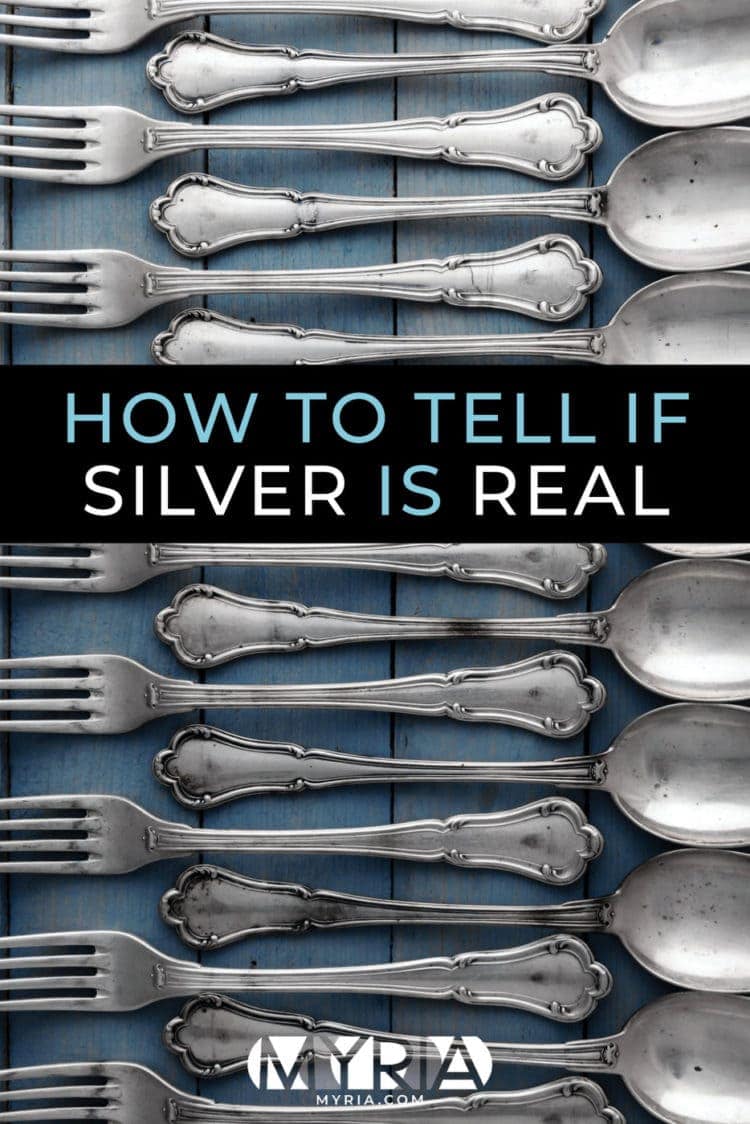How can you tell if silver items — like silverware or a tea set — are real or plated?
If you have been wondering if that antique tea set or your great aunt’s vintage gravy boat is possibly worth a fortune, here are some ways — both simple and a little more complicated — to help you figure it out.
Is that silver real — as in, Sterling or plate?
Silver plating was created as an inexpensive way for people who could not afford Sterling to still be able to enjoy the metal’s beauty.
If an item is truly Sterling silver — which is commonly referred to as “real” silver or solid silver — it will be stamped with one or more of the following hallmarks somewhere on the item (usually on the bottom):
- Sterling silver
- .925 (or higher number)
- Lion hallmark
If none of these are on the item, you probably have a silver-plated piece, as it’s very rare for a valuable item of Sterling-grade silver to have no mark at all.
Silver-plated items are often, but not always, marked as such — they’ll typically say something along the lines of silver plate, plated, EP (electroplated) or EPNS (electroplated nickel silver).
So can you trust the marks on your silver? Well, at the least, it’s illegal to falsely claim plated silver is Sterling silver. The laws currently on the books the prohibit misleading marking date all the way back to 1906.
§297. Stamping plated articles: “In the case of articles of merchandise made in whole or in part of an inferior metal, having deposited or plated thereon or brazed or otherwise affixed thereto a plating, covering, or sheet composed of gold or silver, or of an alloy of either of said metals, and known in the market as rolled gold plate, gold plate, gold filled, silver plate, or gold or silver electroplate, or by any similar designation… shall be stamped, branded, engraved, or imprinted with the word ‘sterling’ or the word ‘coin’, either alone or in conjunction with other words or marks.”
What’s your grade?
There are many different grades of silver, each based upon the percentage of the item’s actual silver content. (It’s not at all uncommon for a precious metal like silver to be combined with another metal — creating an alloy — because pure silver on its own is quite soft.)
The purity percentages are expressed in decimals, carried to at least three digits, and should be marked on the piece with a stamped hallmark. (See several examples of hallmarks from around the world at 925-1000.com and SilverCollection.it.)
Here are some of the most common numbers you’ll see:
.999: Purest form available — aka pure silver, fine silver, investment-grade silver
.958: Britannia silver, produced from 1697 to 1720
.950: Sterling silver, usually found in antique pieces and on silver from France
.925 and up: Sterling silver (stamped on the front ring at right)
.835: A common European silver blend

The silver tests
One definitive way to find out if you have some Sterling silver or Fine silver is to take it to a professional appraiser, antiques dealer, or a pawnshop. However, one of the most common tests they can run — scraping a bit of the metal away and then applying a drop of nitric acid — will damage the piece to a small degree. (Find out more about acid tests for Sterling silver here.)
Another professional testing method is X-ray fluorescence (XRF), which won’t damage your silver pieces, but may cause some harm to your wallet.
MORE: See a time-tested, no-polish way to remove silver tarnish
There are also a couple easy home tests you can do to help point you in the right direction. None of them will provide positive proof, however, so consider them ballpark estimates at best.
Magnet test: If a magnet sticks, you know it’s not silver. However, just because it does not stick doesn’t mean it is Sterling — just that it’s not made with steel.
Ice test: Silver is a very good conductor, and will relay cold or heat very quickly. Put a few ice cubes in a container (not the one you are trying to test) and add about an inch of water. Smaller Sterling silver items will become cold after about 10 seconds, larger ones may take a little longer.
This is a helpful method when you have similar items you can compare against. (For example, a possibly silver fork and a fork from a stainless steel cutlery set.)
Sense tests: Silver has a slightly warm yellowish sheen, and a slight scent (which is stronger when heated or wet). These sensory tests won’t help in the case of Sterling vs plate, but can be helpful for comparison’s sake in certain instances.
For more information, you can check out the Association of Small Collectors of Antique Silver.










